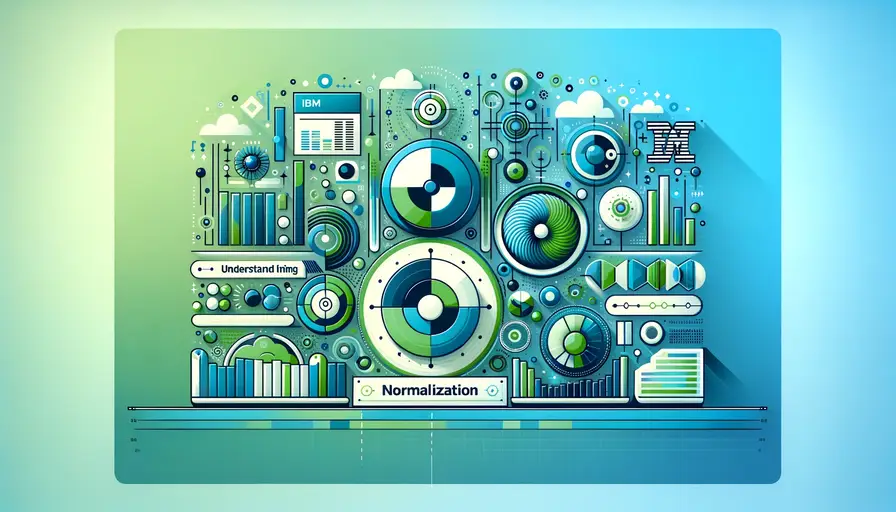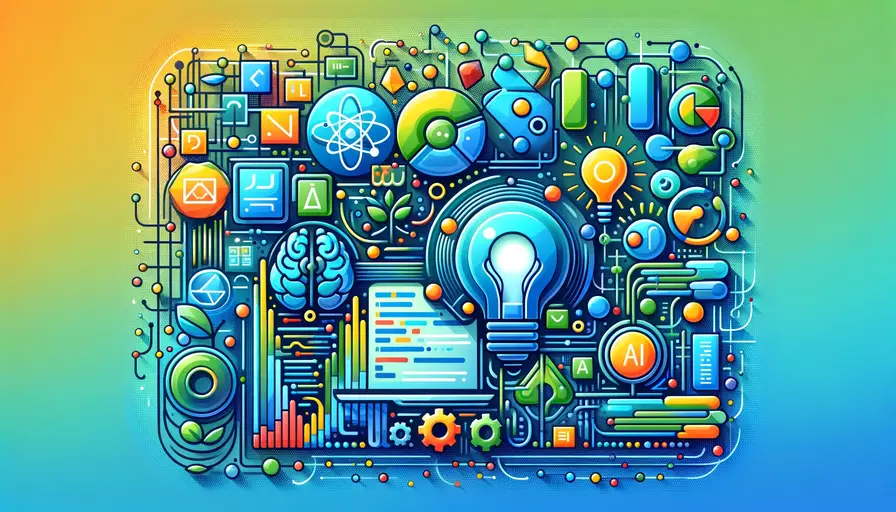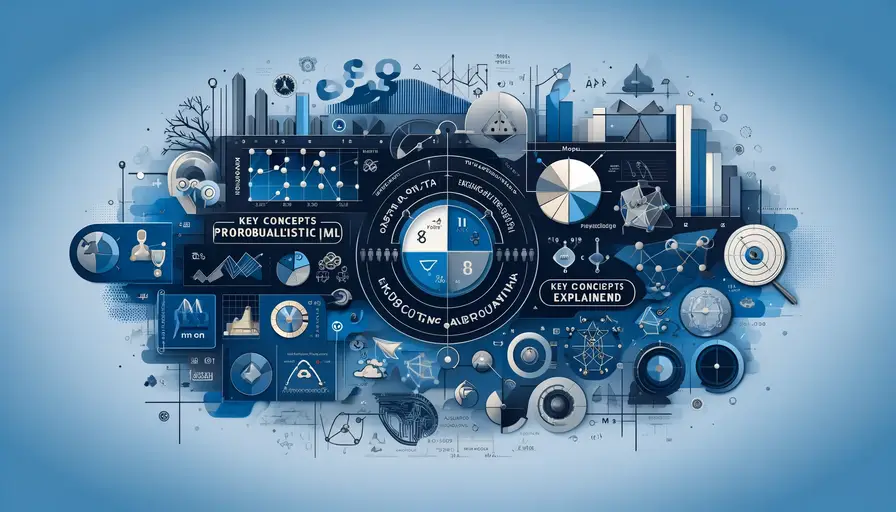
Is NLP: A Form of Machine Learning or AI?

Natural Language Processing (NLP) has become an integral part of modern technology, influencing how machines understand and interact with human language. This article explores the relationship between NLP, machine learning (ML), and artificial intelligence (AI), examining key concepts, practical applications, and the role of these technologies in advancing language processing capabilities. By understanding the connections and distinctions between NLP, ML, and AI, we can better appreciate how these fields contribute to creating intelligent systems.
Understanding the Fundamentals of NLP
Defining Natural Language Processing
Defining Natural Language Processing (NLP) involves understanding its core purpose: enabling machines to comprehend, interpret, and generate human language. NLP combines linguistics, computer science, and AI to bridge the gap between human communication and machine understanding. This interdisciplinary approach allows machines to process text and speech in a way that is meaningful and useful for various applications.
NLP encompasses a wide range of tasks, including text classification, sentiment analysis, machine translation, and speech recognition. These tasks require sophisticated algorithms to analyze and manipulate language data, enabling applications like chatbots, virtual assistants, and language translation services. By leveraging linguistic rules and statistical methods, NLP systems can interpret context, recognize entities, and generate coherent responses.
The development of NLP has been significantly influenced by advancements in machine learning and AI. Early NLP systems relied heavily on rule-based approaches, which required extensive manual coding of linguistic rules. However, the rise of machine learning has enabled more flexible and scalable solutions, allowing NLP systems to learn from vast amounts of data and improve over time.
 Decoding Machine Learning Models: Deterministic or Probabilistic?
Decoding Machine Learning Models: Deterministic or Probabilistic?The Role of Machine Learning in NLP
The role of machine learning in NLP is pivotal, transforming how language processing tasks are performed. Machine learning algorithms enable NLP systems to automatically learn patterns and relationships in language data, reducing the need for manual rule creation. This shift has led to significant improvements in the accuracy and efficiency of NLP applications.
Supervised learning, unsupervised learning, and reinforcement learning are commonly used in NLP. Supervised learning involves training models on labeled datasets, allowing them to predict outcomes such as sentiment or named entities. Unsupervised learning identifies patterns and structures in unlabeled data, useful for tasks like topic modeling and clustering. Reinforcement learning optimizes decision-making processes, often applied in conversational agents and dialogue systems.
Deep learning, a subset of machine learning, has further revolutionized NLP by enabling the creation of complex neural network architectures. Models like recurrent neural networks (RNNs), convolutional neural networks (CNNs), and transformers can capture intricate patterns in language data. These models have achieved state-of-the-art performance in tasks such as language translation, text summarization, and sentiment analysis.
Here’s an example of using a simple machine learning model for text classification with scikit-learn:
 Understanding the Concept of Epochs in Machine Learning
Understanding the Concept of Epochs in Machine Learningimport pandas as pd
from sklearn.model_selection import train_test_split
from sklearn.feature_extraction.text import TfidfVectorizer
from sklearn.naive_bayes import MultinomialNB
from sklearn.metrics import accuracy_score
# Sample data
data = pd.DataFrame({
'text': ['I love this product', 'This is the worst experience', 'Amazing quality', 'Not satisfied', 'Great service'],
'label': [1, 0, 1, 0, 1]
})
# Features and target variable
X = data['text']
y = data['label']
# Split data into training and testing sets
X_train, X_test, y_train, y_test = train_test_split(X, y, test_size=0.2, random_state=42)
# Vectorize text data
vectorizer = TfidfVectorizer()
X_train_vec = vectorizer.fit_transform(X_train)
X_test_vec = vectorizer.transform(X_test)
# Train a Naive Bayes classifier
model = MultinomialNB()
model.fit(X_train_vec, y_train)
# Predict on the test data
y_pred = model.predict(X_test_vec)
# Evaluate the model
accuracy = accuracy_score(y_test, y_pred)
print(f'Accuracy: {accuracy}')The Intersection of NLP and AI
The intersection of NLP and AI highlights how NLP is both a subset and an application of artificial intelligence. AI encompasses a broad range of techniques and technologies aimed at creating intelligent systems that can mimic human cognitive functions. NLP is one of the domains within AI that focuses specifically on language-related tasks.
AI techniques such as machine learning, deep learning, and knowledge representation are fundamental to NLP. These techniques enable NLP systems to understand and generate human language, making them essential components of AI-driven applications. For instance, virtual assistants like Amazon Alexa and Google Assistant rely on NLP to interpret voice commands and provide relevant responses.
NLP also benefits from advancements in AI research, such as the development of pre-trained language models like BERT (Bidirectional Encoder Representations from Transformers) and GPT (Generative Pre-trained Transformer). These models leverage massive amounts of text data and powerful AI techniques to achieve high performance across various NLP tasks. The synergy between NLP and AI continues to drive innovation, leading to more sophisticated and capable language processing systems.
Practical Applications of NLP in Machine Learning
Sentiment Analysis
Sentiment analysis is a widely used application of NLP that involves determining the sentiment or emotion expressed in a piece of text. Businesses and organizations use sentiment analysis to gauge customer opinions, monitor social media, and analyze feedback. By understanding the sentiment behind text, companies can make informed decisions and improve customer experiences.
 Unit Testing for Machine Learning Models
Unit Testing for Machine Learning ModelsMachine learning models, such as Naive Bayes, support vector machines (SVMs), and deep learning models like LSTM (Long Short-Term Memory) networks, are commonly used for sentiment analysis. These models are trained on labeled datasets containing text and corresponding sentiment labels, enabling them to predict sentiment for new, unseen text.
Sentiment analysis can be applied to various domains, including product reviews, social media posts, and customer support interactions. By automating sentiment analysis, businesses can quickly and accurately assess public opinion and respond to customer needs more effectively.
Here’s an example of performing sentiment analysis using a simple machine learning model with scikit-learn:
import pandas as pd
from sklearn.model_selection import train_test_split
from sklearn.feature_extraction.text import TfidfVectorizer
from sklearn.linear_model import LogisticRegression
from sklearn.metrics import accuracy_score, classification_report
# Sample data
data = pd.DataFrame({
'text': ['I love this product', 'This is the worst experience', 'Amazing quality', 'Not satisfied', 'Great service'],
'sentiment': [1, 0, 1, 0, 1]
})
# Features and target variable
X = data['text']
y = data['sentiment']
# Split data into training and testing sets
X_train, X_test, y_train, y_test = train_test_split(X, y, test_size=0.2, random_state=42)
# Vectorize text data
vectorizer = TfidfVectorizer()
X_train_vec = vectorizer.fit_transform(X_train)
X_test_vec = vectorizer.transform(X_test)
# Train a logistic regression model
model = LogisticRegression()
model.fit(X_train_vec, y_train)
# Predict on the test data
y_pred = model.predict(X_test_vec)
# Evaluate the model
accuracy = accuracy_score(y_test, y_pred)
print(f'Accuracy: {accuracy}')
print(classification_report(y_test, y_pred))Text Classification
Text classification is another essential application of NLP, where texts are categorized into predefined classes based on their content. This technique is used in spam detection, news categorization, and document classification. By automating text classification, organizations can efficiently manage and organize large volumes of textual data.
 Is Linear Regression Considered a Machine Learning Algorithm?
Is Linear Regression Considered a Machine Learning Algorithm?Machine learning algorithms such as Naive Bayes, SVMs, and neural networks are commonly used for text classification. These models learn from labeled datasets, where each text is associated with a specific category. Once trained, the models can classify new texts with high accuracy.
Text classification can significantly enhance information retrieval and content management systems. For example, email services use text classification to filter spam emails, while news aggregators categorize articles into relevant topics. This automation improves user experiences by delivering relevant content and reducing information overload.
Here’s an example of implementing text classification using scikit-learn:
import pandas as pd
from sklearn.model_selection import train_test_split
from sklearn.feature_extraction.text import TfidfVectorizer
from sklearn.svm import SVC
from sklearn.metrics import accuracy_score, classification_report
# Sample data
data = pd.DataFrame({
'text': ['I love this product', 'This is the worst experience', 'Amazing quality', 'Not satisfied', 'Great service'],
'category': ['positive', 'negative', 'positive', 'negative', 'positive']
})
# Features and target variable
X = data['text']
y = data['category']
# Split data into training and testing sets
X_train, X_test, y_train, y_test = train_test_split(X, y, test_size=0.2, random_state=42)
# Vectorize text data
vectorizer = TfidfVectorizer()
X_train_vec = vectorizer.fit_transform(X_train)
X_test_vec = vectorizer.transform(X_test)
# Train a support vector classifier
model = SVC()
model.fit(X_train_vec, y_train)
# Predict on the test data
y_pred = model.predict(X_test_vec)
# Evaluate the model
accuracy = accuracy_score(y_test, y_pred)
print(f'Accuracy: {accuracy}')
print(classification_report(y_test, y_pred))Machine Translation
Machine translation is a critical application of NLP that involves translating text or speech from one language to another. This technology has revolutionized global communication, enabling real-time translation for various languages. Machine translation systems are used in applications such as language learning, international business, and travel.
 Supervised vs Unsupervised Learning: Understanding the Difference
Supervised vs Unsupervised Learning: Understanding the DifferenceEarly machine translation systems relied on rule-based approaches, which required extensive manual coding of linguistic rules. However, modern systems use machine learning, particularly deep learning, to achieve higher accuracy and fluency. Neural machine translation (NMT) models, such as those based on the transformer architecture, have set new benchmarks in translation quality.
NMT models are trained on large parallel corpora, which contain text pairs in different languages. By learning the patterns and structures of multiple languages, these models can generate accurate translations. Services like Google Translate and Microsoft Translator leverage NMT to provide real-time translation for numerous languages.
Here’s an example of using a pre-trained transformer model for machine translation with Hugging Face Transformers:
from transformers import MarianMTModel, MarianTokenizer
# Load pre-trained model and tokenizer
model_name = 'Helsinki-NLP/opus-mt-en-de'
tokenizer = MarianTokenizer.from_pretrained(model_name)
model = MarianMTModel.from_pretrained(model_name)
# Sample text to translate
text = "Machine learning is transforming the world."
# Prepare the text for translation
inputs = tokenizer([text], return_tensors='pt', padding=True)
# Generate translation
translated = model.generate(**inputs)
translated_text = tokenizer.decode(translated[0], skip_special_tokens=True)
print(f'Translated text: {translated_text}')Future Directions in NLP, Machine Learning, and AI
Advancements in Pre-trained Language Models
Advancements in pre-trained language models are driving the next wave of innovation in NLP. Pre-trained models like BERT, GPT, and T5 have achieved state-of-the-art performance on various NLP tasks. These models are trained on massive datasets and can be fine-tuned for specific applications, providing powerful language understanding capabilities.
 Is Deep Learning part of AI or ML?
Is Deep Learning part of AI or ML?BERT, developed by Google, uses a transformer architecture to learn bidirectional representations of text. This enables it to capture context from both the left and right sides of a word, improving accuracy in tasks like question answering and text classification. GPT, developed by OpenAI, excels in text generation and can produce coherent and contextually relevant text based on a given prompt.
The continued development of pre-trained language models is expanding the possibilities for NLP applications. Researchers are exploring ways to make these models more efficient, interpretable, and adaptable to different languages and domains. As these models evolve, they will enable more sophisticated and accurate language processing systems.
Here’s an example of using a pre-trained BERT model for text classification with Hugging Face Transformers:
from transformers import BertTokenizer, BertForSequenceClassification
import torch
# Load pre-trained model and tokenizer
model_name = 'bert-base-uncased'
tokenizer = BertTokenizer.from_pretrained(model_name)
model = BertForSequenceClassification.from_pretrained(model_name)
# Sample text for classification
text = "I love using machine learning for NLP tasks."
# Tokenize the text
inputs = tokenizer(text, return_tensors='pt', padding=True, truncation=True, max_length=128)
# Make prediction
with torch.no_grad():
outputs = model(**inputs)
predictions = torch.argmax(outputs.logits, dim=-1)
print(f'Predicted label: {predictions.item()}')Ethical Considerations and Fairness in NLP
Ethical considerations and fairness in NLP are becoming increasingly important as these technologies impact various aspects of society. Ensuring that NLP systems are fair, transparent, and unbiased is crucial for building trust and preventing harm. Researchers and developers must address issues such as bias, privacy, and accountability in NLP applications.
Bias in NLP models can arise from training data that reflects societal prejudices. These biases can lead to unfair or discriminatory outcomes, particularly in applications like hiring, lending, and law enforcement. Techniques such as bias detection, mitigation, and fairness-aware learning are essential for creating equitable NLP systems.
Privacy is another critical concern, especially when NLP systems process sensitive information. Ensuring data security and compliance with regulations like GDPR is vital for protecting user privacy. Additionally, transparency and accountability are necessary for understanding how NLP models make decisions and for holding developers accountable for their outcomes.
Here’s an example of using Fairness Indicators with TensorFlow to assess fairness in a classification model:
import tensorflow as tf
from tensorflow_model_analysis import EvalConfig, EvalSharedModel, FairnessIndicators, load_eval_result
from tensorflow_model_analysis import model_eval_lib as eval_lib
# Sample data
data = {
'text': ['I love this product', 'This is the worst experience', 'Amazing quality', 'Not satisfied', 'Great service'],
'label': [1, 0, 1, 0, 1],
'gender': ['male', 'female', 'male', 'female', 'male']
}
# Create a simple model for demonstration
model = tf.keras.Sequential([
tf.keras.layers.Input(shape=(128,)),
tf.keras.layers.Dense(1, activation='sigmoid')
])
model.compile(optimizer='adam', loss='binary_crossentropy', metrics=['accuracy'])
# Sample evaluation config for fairness analysis
eval_config = EvalConfig(
model_specs=[{
'name': 'model',
'label_key': 'label'
}],
slicing_specs=[{
'feature_keys': ['gender']
}]
)
# Load evaluation results and analyze fairness
eval_result = load_eval_result(eval_lib.run_model_analysis(
model=model,
data=data,
eval_config=eval_config
))
# Display fairness indicators
FairnessIndicators(eval_result)Integration of NLP with Other AI Technologies
Integration of NLP with other AI technologies is driving new innovations and expanding the capabilities of intelligent systems. Combining NLP with computer vision, robotics, and knowledge representation enables more comprehensive and sophisticated applications. This integration enhances the ability of AI systems to understand and interact with the world.
For example, combining NLP with computer vision allows for multimodal applications such as image captioning, where models generate descriptive text for images. In robotics, integrating NLP enables robots to understand and follow verbal instructions, improving human-robot interaction. Knowledge representation techniques enhance NLP systems by providing structured information that improves language understanding and reasoning.
The synergy between NLP and other AI technologies opens up new possibilities for creating intelligent, interactive, and context-aware systems. As research in these areas progresses, we can expect more advanced and integrated AI applications that offer seamless and intuitive user experiences.
Here’s an example of integrating NLP with computer vision using Hugging Face Transformers and OpenCV:
import cv2
from transformers import VisionEncoderDecoderModel, ViTFeatureExtractor, AutoTokenizer
import torch
# Load pre-trained model and tokenizer
model_name = 'nlpconnect/vit-gpt2-image-captioning'
feature_extractor = ViTFeatureExtractor.from_pretrained(model_name)
tokenizer = AutoTokenizer.from_pretrained(model_name)
model = VisionEncoderDecoderModel.from_pretrained(model_name)
# Load and preprocess image
image = cv2.imread('sample_image.jpg')
image = cv2.cvtColor(image, cv2.COLOR_BGR2RGB)
inputs = feature_extractor(images=image, return_tensors='pt')
# Generate caption
with torch.no_grad():
pixel_values = inputs.pixel_values
generated_ids = model.generate(pixel_values)
caption = tokenizer.decode(generated_ids[0], skip_special_tokens=True)
print(f'Generated caption: {caption}')Natural Language Processing (NLP) is a dynamic field that intersects with machine learning and artificial intelligence, driving advancements in language understanding and generation. By leveraging machine learning algorithms, pre-trained models, and ethical considerations, NLP systems can perform complex language tasks with high accuracy and fairness. The integration of NLP with other AI technologies further expands its capabilities, enabling the creation of intelligent and interactive systems. As research and development in NLP continue to progress, we can expect more innovative and impactful applications that enhance human-machine communication. Using resources like Google and Kaggle, developers and researchers can continue to explore and push the boundaries of NLP, machine learning, and AI.
If you want to read more articles similar to Is NLP: A Form of Machine Learning or AI?, you can visit the Artificial Intelligence category.






You Must Read